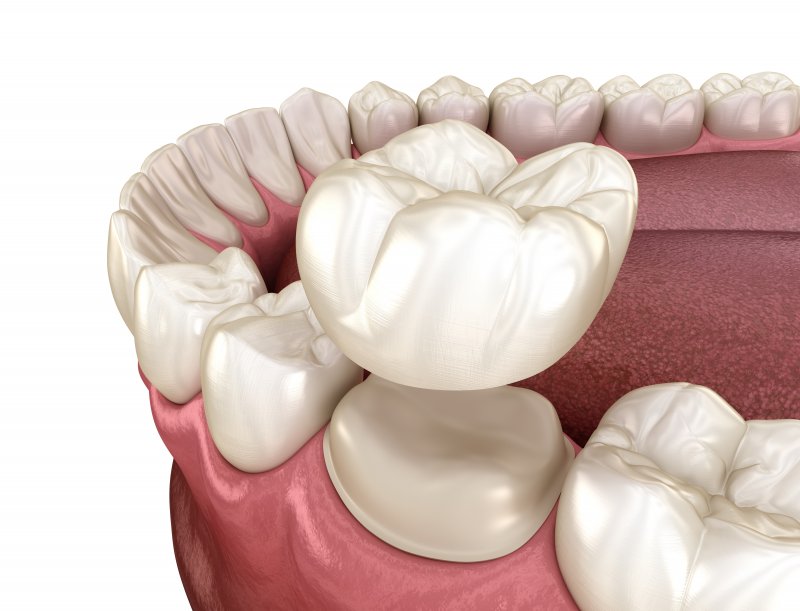
Getting a dental crown is often a necessary step for restoring or protecting a damaged or decayed tooth. Once your crown is in place, your tooth will be able to function normally again. However, the process does usually involve two recovery periods: one after the initial visit to prepare the tooth, and one after the second visit where the actual crown is placed. The following post will give you an idea of what to expect afterward when getting a dental crown in Kittanning.
Recovery and Care After Your First Visit
The initial appointment to prepare your tooth for a crown will involve removing small amounts of enamel. As such, the area around the tooth in question might be swollen and slightly sensitive for a while. Rinsing with warm salt water twice a day can help soothe any irritated tissues. You’ll also want to stay away from extremely hot or cold foods that can agitate a sensitive tooth.
You’ll be given a temporary crown to wear until your second appointment. It’s important to keep the area around this crown clean so that your mouth can heal properly. Make sure that you brush around the restoration gently at least twice a day. If the crown happens to come off, you can temporarily reattach it with a bit of Vaseline until your dentist can re-cement it in place.
Finally, while some discomfort is to be expected after your first visit, it shouldn’t last more than a few days. If it doesn’t seem to go away or becomes severe over time, call your dentist right away so that they can address the problem.
Recovery and Care After Placement of Your Crown
Once your permanent crown has been placed, the tissues around the area may be somewhat tender. It’s a good idea to continue with the salt water rinses for at least three more days. Any sensitivity and tenderness shouldn’t last more than two weeks, so be ready to call your dentist if it doesn’t look like your mouth is recovering properly.
If you want your new crown to last as long as possible, you need to take good care of it. That means avoiding bad habits that could damage it, such as chewing ice or biting your fingernails. Hygiene matters as well; crowns can’t get cavities, but bacteria can still slip under them to cause decay. As such, it’s important to brush and floss your crown daily while paying close attention to the point where the restoration meets the gums.
If you’re in doubt about the kind of care you should give your mouth or your new restoration, remember that you can always reach out to your dentist in Kittanning. They can give you tips for making sure the recovery process is a success so that you’ll be able to enjoy the benefits of your dental crown for many years to come.
About the Author
Dr. Ray Voller has over 40 years of dental experience. He has received Fellowship and Mastership Awards from the Academy of General Dentistry, and he’s currently a member of the American Academy of Cosmetic Dentistry. He is an expert in placing lifelike, reliable dental crowns that allow his patients to repair their smiles without losing their natural teeth. If you would like to schedule an appointment with Dr. Voller, visit his website or call (724) 543-4948.
